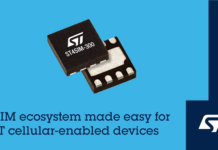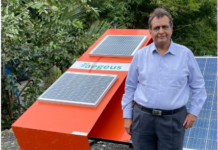By Aritra Sarkhel
It’s a bright Saturday morning and I wake up to heavy metal music blasting out from my Smart Alarm clock which I recently got from Kick starter
Even before I manage to get myself out of slumber, the alarm system at my house suddenly spurns up an alert about somebody breaking into my house. While amidst this hara-kiri, my Nest alarm notifies me about the alarming levels of Carbon Monoxide inside my house.
But I was alive and kicking and no one had entered my house. What had transpired was a classic case of hacking of some of the home automation devices. While this was a hypothetical situation, it’s pretty close to becoming the reality if certain measures are not taken.
Welcome to the world of Internet of things wherein a plethora of devices are connected to the Internet which emanates huge amounts of data. This data if analyzed correctly, will have a lot of context to our lives.But too many devices, no single unified platform and security standards are going to pose many challenges to the world of IoT.
Keeping such issues in mind, a comprehensive study on IoT was done by The Internet Society (ISOC) which laid out certain critical issues which will have an impact on IoT
Challenges to IOT Security concerns: With so many interconnected devices out there in market and plenty more to come in the near future, a security policy cannot be an afterthought.
If the IOT devices are poorly secured, cyber attackers will use them as entry points to cause harm to other devices in the network. This will lead to loss of personal data out into the public and the entire trust factor between internet-connected devices and people using them will deteriorate.
IoT
In order to evade such scenarios, it’s extremely critical to ensure the security, resilience, and reliability of internet applications to promote the use of internet-enabled devices among users across the world.
Security constraints for IoT are so critical that even analyst firm Gartner came out with some astounding numbers. According to them, the worldwide spending for the IoT security market will reach $348 million in 2016, a rise of 23.7% from $281.5 million in 2015.
Privacy issues: The possibility of tracking and surveillance of people by the government and private agencies increases as the devices are constantly connected to the internet.
These devices collect user data without their permission, analyze them for purposes only known to the parent company. The social embrace of the IOT devices leads people to trust these devices with collection of their personal data without understanding the future implications.
Inter-operatability standard issues: In an ideal environment, information exchange should take place between all the interconnected IoT devices. But the actual scenario is inherently more complex and depends on various levels of communication protocols stacks between such devices.
The OEM’s producing industry ready IoT devices will need to invest a lot of money and time to create standardized protocols common for all IoT devices or else it will delay product deployment across different verticals.
Legal regulatory and rights issues: There are no concrete laws present which encompasses the various layers of IoT across the world. The gamut of devices connected to each other raises many security issues and no existing legal laws address such exposures.
The issues lie in whether current liability laws will extend their arm for devices which are connected to the internet all the time because such devices have complex accountability issues.
Emerging economy and development issues: IoT provides a great platform for enablement of social development in varied societies across the world and with the proliferation of Internet across the various sections of the society in developing countries coupled with lowering costs of microprocessors and sensors will make IoT devices accessible to low income households.
But there are lot of shortcomings related to enablement of high speed internet and basic technology services architecture for commercial and business usage in developing countries. Until and unless, a basic infrastructure is in place, devices would be of no value to the users.
While IoT brings about new opportunities; at the same time, it adds multiple layers of complexity. Such a new environment of devices will add a new dimension for policy makers in emerging economies who will need to chalk out a new blueprint for IoT-related regulatory concerns.
The future lies in interconnected devices but how we manage them will decide how our Digital future is shaped.


















